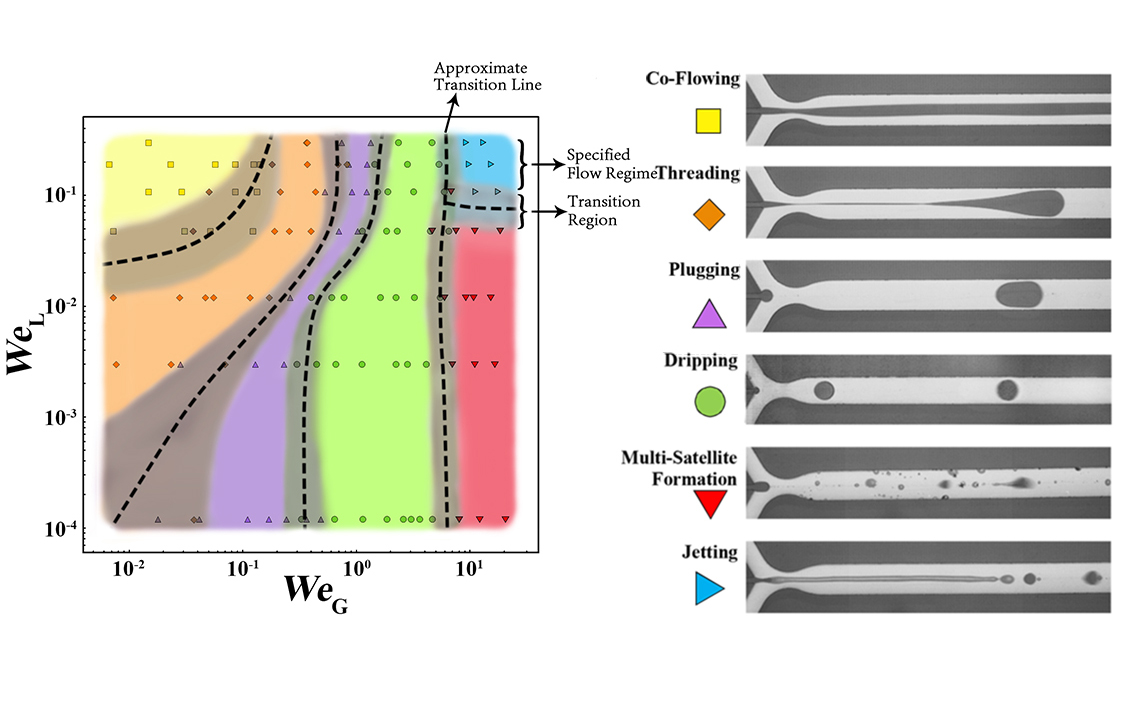Flow regime mapping of water-in-air droplet formation in a confined microfluidic channel.
Liquid-Gas Droplet Microfluidics
The historical trends of droplet-based microfluidics employ continuous phases that are more viscous than the discrete phase, such as oil-water. In an effort to increase droplet throughput and mixing rates, MTFL is actively developing and testing the next generation of gas-liquid microfluidic devices. Research efforts are focused on the two most critical tasks: droplet generation and mixing.
Droplet Generation
Generating liquid droplets in a confined gaseous microflow displays remarkably different physics in comparison to traditional liquid-liquid systems. At MTFL, we are busy trying to analyze, predict, test, and understanding detachment process, resulting droplet volume, and generation rate for the most common geometries, such as T-junction and flow focusing, as well as unconventional geometries and surface modifications.
Droplet Mixing
Mixing, dilution, or sample homogenization are an essential process in modern Lab-on-a-Chip and Micro Total Analysis Systems where this seemingly simple task remains a major obstacle. The ability to analyze non-equilibrium conditions and probe the kinetics of bio-molecular reactions has been limited by the speed at which mixing takes place. The low Reynolds number typical of most microfluidic devices signify laminar and orderly flows that are devoid of any inertial characteristics. In order to maintain the inherent benefits and advantages afforded by droplet-based systems, significant strides are required to reduce droplet mixing rates to the sub-millisecond scale. MTFL is addressing this shortcoming by developing a new class of microfluidic devices that can achieve sub-millisecond mixing times fornano-liter sized droplets through inertial interactions. What makes this work unique is that it employsa high-speed gaseous flow to accelerate, steer, and collide discrete droplets at speeds near 1m/s in a confined microchannel. The volumetric rearrangement that occurs as kinetic energy prior to collision is viscously dissipated rapidly reduces the effective diffusion length to yield sub-millisecond mixing times.Using our microfluidic test bed, researchefforts are currently underway at to characterize how collision velocity and length scale influences mixing performance.




